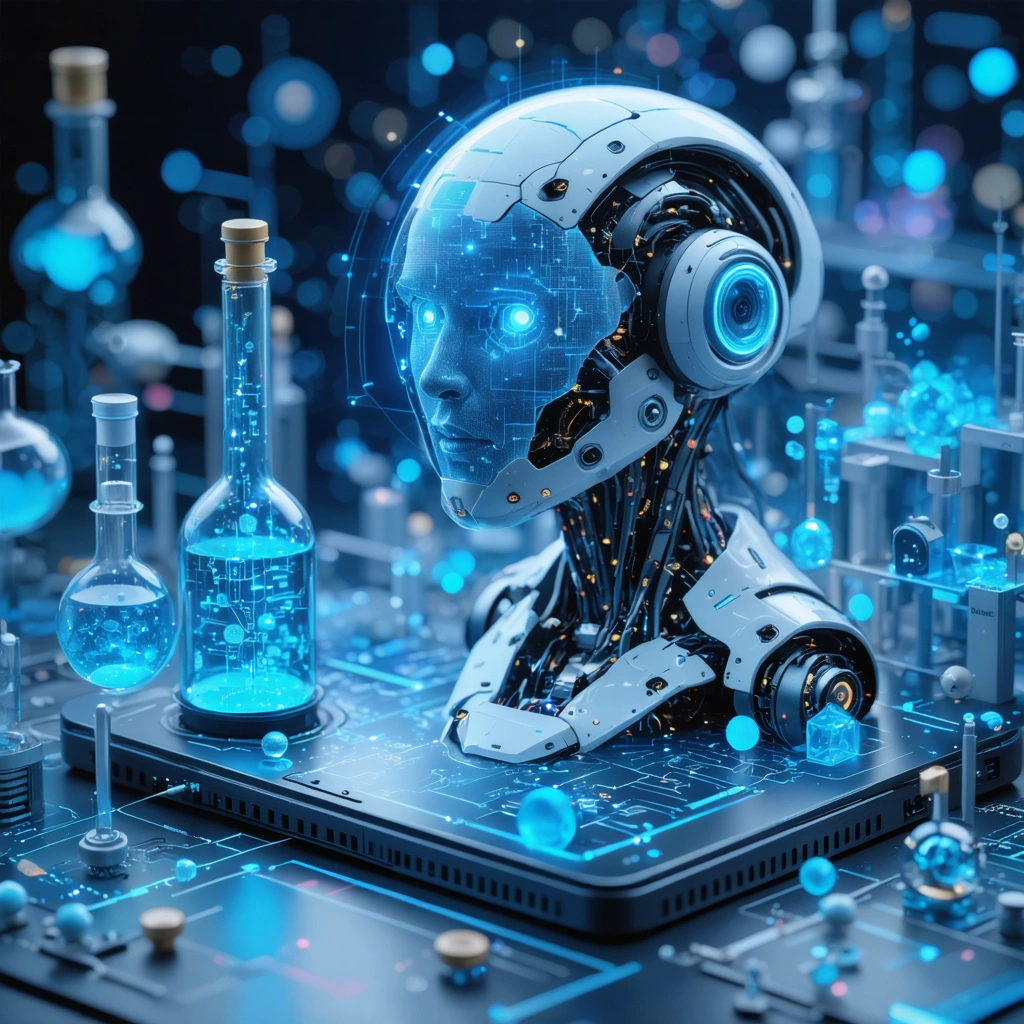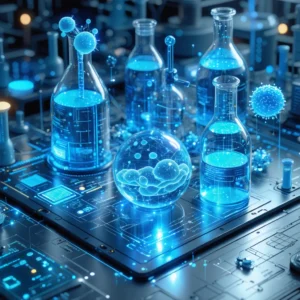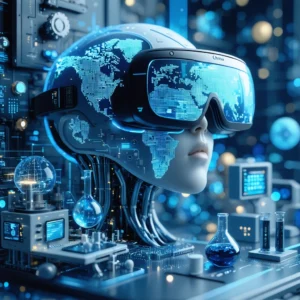
Introduction
In recent years, artificial intelligence has emerged as a dominant force in scientific research, transforming laboratories and innovation worldwide. Researchers and experts continuously explore how AI contributes to breakthrough discoveries, and meanwhile, they confront challenges that affect human creativity. Moreover, scientists experience dramatic changes in their work dynamics, while technological prowess provides new avenues for innovation. Consequently, industries and academic institutions have embraced AI tools, which facilitate data analysis and experimentation. Additionally, various sectors have reported an impressive 44% surge in discoveries and a notable 39% enhancement in patent activities. However, a significant number of researchers—82% in one study—express reduced work satisfaction, mainly due to diminished creative participation.
The Rise of AI-Powered Discovery
AI rapidly altered scientific processes by automating routine tasks and augmenting experimental methods. In parallel, research teams have adopted streaming algorithms and machine learning to analyze complex data sets. Furthermore, these tools have accelerated hypothesis testing and allowed scientists to focus on crafting innovative theories. To illustrate these findings, consider the following key benefits of AI in research:
- Increased analysis speed and precision
- Enhanced data correlation across experiments
- Automation of repetitive laboratory tasks
- Assistance in modeling and simulation of complex systems
Notably, research institutions actively employ AI-powered platforms, which consistently yield significant progress in scientific discoveries and patent development.
Quantifying Growth: Discoveries and Patents
Researchers compile impressive statistics to quantify AI’s impact on innovation. For instance, in one comprehensive study, scientists reported a 44% increase in breakthrough discoveries after integrating AI methodologies. Moreover, patent activities saw a 39% rise due to streamlined research processes. The following numbered list outlines how AI influences different stages of scientific ventures:
- Data aggregation and preprocessing improve research efficiency.
- Enhanced simulation techniques lead to better experimental design.
- Rapid analysis counters delays in research timelines.
- Integration with existing technologies strengthens patent proposals.
In addition, the following table summarizes crucial statistics that researchers have observed in advanced laboratories:
| Indicator | Growth Percentage |
|---|---|
| Scientific Discoveries | 44% |
| Patent Activity | 39% |
| Creative Work Satisfaction Decline | 82% (reported drop) |
Thus, these numbers clarify how AI modifies research dynamics while delivering measurable benefits.
The Dual-Edged Sword: Efficiency and Creativity
Although AI enhances discovery and patent activities, it also challenges traditional creative processes. Researchers increasingly depend on algorithms, which unfortunately can diminish the exploration of novel ideas. Consequently, many scientists report reduced creative control and job satisfaction. In contrast, this technological trend pushes the scientific community to re-examine strategies for fostering creativity. Alongside increased research output, scientists now seek innovative ways to engage with AI without sacrificing creative thinking. Moreover, academic institutions and private companies hold workshops and seminars designed to balance technology and human ingenuity. Therefore, establishing collaborations between IT experts and scientists becomes imperative. Additionally, some laboratories have set up rotational systems that allow scientists to periodically disconnect from AI-driven processes.
Innovative Approaches to Maintain Creative Control
To address the challenges of diminishing creative role, institutions implement several strategies. Primarily, they encourage interdisciplinary projects that integrate artistic perspectives with technical proficiency. Furthermore, leadership supports initiatives that increase human input in research oversight. In order to bridge the gap between automated processes and creative thinking, organizations undertake the following actions:
- Scheduling regular creative brainstorming sessions.
- Implementing mentorship programs that pair senior researchers with AI specialists.
- Redesigning project structures to allocate time for innovation.
Additionally, experts emphasize the integration of flexible AI systems that supplement rather than replace human creativity. Researchers now experiment with hybrid models that facilitate both precision and personal insight. In consequence, these strategies have begun to restore balance in laboratory environments.
Case Studies and Success Stories
Several institutions share notable success stories that highlight the benefits and pitfalls of AI integration in research. For example, one prestigious laboratory experienced a dramatic upswing in innovative breakthroughs after adopting AI-enhanced systems, which drastically accelerated their research workflow. Conversely, another research center witnessed a decline in creative involvement among its leading experts, eventually prompting rapid policy changes. In addition, many organizations compile case studies to draw comparisons between traditional methods and AI-assisted techniques. Researchers list the following lessons learned from these case studies:
- Emphasize balance between automation and human oversight.
- Encourage open communication across multidisciplinary teams.
- Redesign work environments to nurture both efficiency and ingenuity.
Hence, these documented experiences offer valuable insights for global scientific communities eager to maximize AI benefits while mitigating risks.
Integrating AI with Traditional Research Methods
Scientists face the significant task of blending advanced AI algorithms with time-tested research methods. Therefore, many researchers incorporate AI modules into existing frameworks, ensuring a smooth transition. Additionally, academic conferences now spotlight sessions on integrated methodologies. In many cases, these discussions emphasize the following points:
- Retention of critical thinking and intuition.
- Enhanced collaboration between AI experts and traditional scientists.
- Flexibility in working methods to preserve researcher satisfaction.
Moreover, institutions have set forth policies that foster dual-track experiments, where AI-assisted projects coexist with human-led creativity. Consequently, these integrated approaches open up new possibilities, combining robust technological advantages with the nuanced insights of experienced researchers.
Future Directions and Technological Horizons
Looking ahead, the scientific landscape will undoubtedly continue to evolve under the influence of AI. Researchers and technology developers venture into promising fields that merge digital intelligence with human intuition. In particular, emerging trends include the development of adaptive AI systems designed to learn from creative input. Additionally, start-ups and academic labs experiment with self-improving algorithms that adjust based on real-time feedback. Furthermore, policy makers actively collaborate with industry leaders to create ethical standards addressing the balance between automation and creativity. As a result, the scientific community envisions a future where AI and human creativity coexist harmoniously to achieve unprecedented breakthroughs.
Emerging Research Priorities
Researchers now focus on novel areas that integrate AI innovations. They explore topics such as:
- Adaptive machine learning for personalized experiments.
- Real-time data processing to enhance experimental reproducibility.
- Collaborative intelligence projects that marry human creativity with algorithmic precision.
Moreover, stakeholders consider the implications of these advances on academic career progression, scientific ethics, and policy development. Consequently, emerging research priorities will shape the evolution of laboratory practices, ensuring that AI continues to serve as a tool rather than a replacement for human insight. Ultimately, the balance between data-driven efficiency and creative exploration remains a critical topic for future studies.
Conclusion
In summary, artificial intelligence has revolutionized the way researchers conduct experiments and pursue discoveries. The dramatic increases in breakthrough findings and patent registrations present compelling evidence for AI’s transformative role. However, the challenges of reduced creative input call for thoughtful integration strategies, which encourage an equilibrium between automation and human innovation. By implementing interdisciplinary approaches and fostering collaboration, research institutions can navigate these challenges effectively. Moreover, policymakers and industry leaders must work collaboratively to create environments that inspire both technological progress and sustained creative energy. Thus, the future of scientific discovery relies on our ability to adapt, innovate, and balance efficiency with the human spirit.






